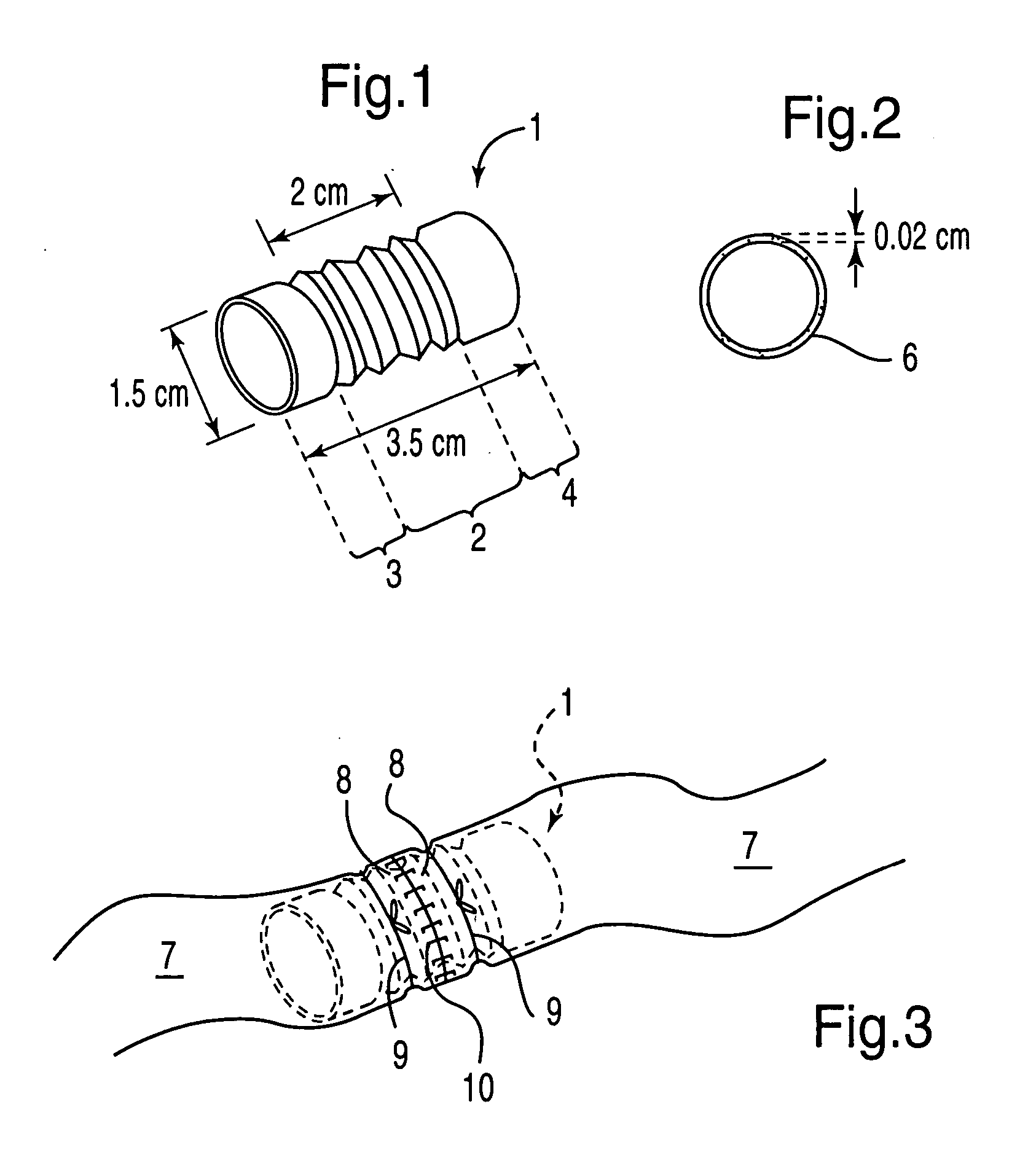Visceral anastomotic device and method of using same
an anastomosis and visceral technology, applied in the field of visceral anastomosis devices and methods, can solve the problems of insufficiently simplified anastomosis methods, above methods still require a great deal of effort in their use, and achieve the effect of ensuring the effect of reconnection, and ensuring the strength of the anastomosis
- Summary
- Abstract
- Description
- Claims
- Application Information
AI Technical Summary
Benefits of technology
Problems solved by technology
Method used
Image
Examples
Embodiment Construction
[0017] Referring to the drawings, wherein like reference numerals indicate like elements throughout the several figures, there is depicted a biocompatible and dissolvable stent 1 of the present invention for use in the anastomosis of a mammalian luminal viscus 7. A particularly applicable use of the present invention is for anastomosis of the bowel.
[0018] A stent in accordance with the present invention is comprised of a biocompatible material which safely dissolves in the body after a short period of time. The material must have sufficient strength and lasting power to allow the surgeon enough time to complete the anastomosis, but preferably of a material that will also completely and safely dissolve into the body after a short period of time thereafter. Furthermore, the material must also be soft enough to allow easy penetration by sutures or surgical staples. A particularly suitable biocompatible material for use in the invention is comprised of PGA.
[0019] As made apparent by F...
PUM
 Login to View More
Login to View More Abstract
Description
Claims
Application Information
 Login to View More
Login to View More - R&D
- Intellectual Property
- Life Sciences
- Materials
- Tech Scout
- Unparalleled Data Quality
- Higher Quality Content
- 60% Fewer Hallucinations
Browse by: Latest US Patents, China's latest patents, Technical Efficacy Thesaurus, Application Domain, Technology Topic, Popular Technical Reports.
© 2025 PatSnap. All rights reserved.Legal|Privacy policy|Modern Slavery Act Transparency Statement|Sitemap|About US| Contact US: help@patsnap.com


